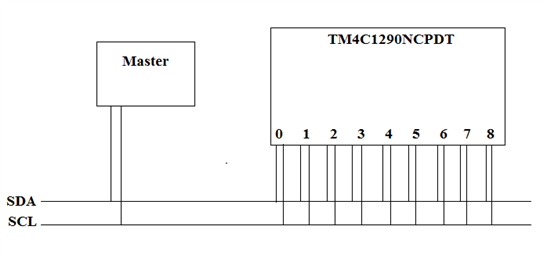Hi,
My client have designed a processor which will communicate via I2C as a master. I have to choose the perfect device for the slave part. The master designates each time a slave address and should receive data instantly from the slave.
We need a microcontroller that will be able to respond to the multiple i2c slave addresses written by the master (let's say 10).
I think that TM4C1290NCPDT is a good candidate if one of these alternatives is possible :
- Using all i2c modules simultaneously and assign a diffrent i2c slave address for each (I can use the dual addressing to increase the possible number of slave addresses). When the master nominates a slave, the corresponding i2c module (i2c GPIO) responds to it.

- Using only an i2c module : 2 pins (SDA and SDL) and modify the i2c driver to make the TM4C1290NCPDT check for the slave address written by the master, change it's own address to it (to the address designated by the master).
I'll be glad if you let me know if any of these cases is possible, or if there is another way to do it.
PS: I have no control on the master device. I can only choose and configure the slave.
Kind regards

